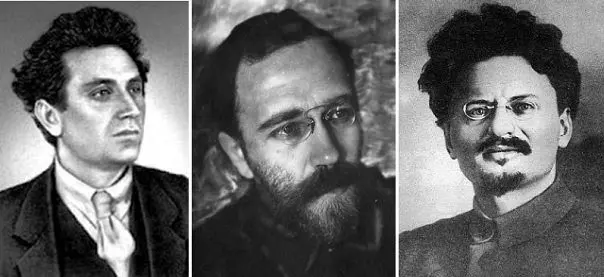Contents
Greetings to regular readers and visitors of the site! How Stalin came to power – about the beginning of the political career of Joseph Vissarionovich Stalin, the head of the Soviet state from 1924 to 1953.
Joseph Vissarionovich Stalin was one of many contenders for power after Lenin’s death. How did it happen that a young student of a theological seminary eventually became the head of the Bolshevik Party and one of the most prominent personalities in the history of mankind?
Stalin’s rise to power
In 1922, due to a serious illness, Lenin withdrew from political affairs. Power passes to the Politburo. At that time it included: Lenin, Trotsky, Stalin, Zinoviev, Kamenev, Tomsky and Rykov.
During the plenum of the Central Committee of the RCP (b), held on April 3, 1922, Stalin was elected General Secretary of the Central Committee of the party. At the same time, he was entrusted with the leadership of the party apparatus, but Lenin still remained the head of the government.
On May 27, 1922, Lenin was paralyzed. Realizing perfectly well that the head of government did not have long to live, a struggle for power began within the party.
Zinoviev, Kamenev and Trotsky
The chairmen of the Leningrad and Moscow Party organizations, Zinoviev and Kamenev, united against Trotsky. Leon Trotsky was the main contender for power, who led the Red Army. Joseph Vissarionovich supported this association.

G.E. Zinoviev, L.B. Kamenev, L. D. Trotsky
The reason for this was the long-standing enmity and the completely opposite vision of the future of Russia and the world from Trotsky and Stalin. Leon Trotsky believed that the revolution should continue, spreading throughout the world, and imposing the power of the Bolsheviks in every country.
Stalin, on the other hand, believed that the world revolution was destructive. The main task of the party is not to impose communist power throughout the world, but to establish order in its own country, destroyed by the civil war.
Since Stalin and Trotsky were longtime enemies, Zinoviev and Kamenev decided to give Stalin full carte blanche to eliminate the common enemy, supporting every decision made by the General Secretary.
Taking into account Stalin’s repeated statements about his unwillingness to engage in governing the country and in general political activities, they assumed that, after the destruction of Trotsky, a tired Stalin would transfer all power into their hands.
Lenin’s death
Lenin died on January 21, 1924. This greatly weakened the position of Leon Trotsky in the political arena. Stalin, on the contrary, competently using Lenin’s creative works, was able to strengthen his own.
He strengthened his position so much that even after the “Letter to the Congress” was read out before the beginning of the XIII Party Congress. This is a kind of political testament dictated by Lenin in late 1922 – early 1923. Stalin, who received a rather negative assessment in this letter, resigned – but the resignation was rejected.
After this congress, the alliance of Kamenev and Zinoviev with Stalin fell apart. Iosif Vissarionovich refused to hand over power to his former comrades-in-arms. They had to organize a new alliance, this time against Stalin.
In this struggle, they attracted Nadezhda Krupskaya and the People’s Commissariat for Finance Grigory Sokolnikov to their side. But Stalin was supported by Rykov, Tomsky and Bukharin.
XIV Congress of the CPSU (b)
In December 1925, the XIV Congress of the All-Union Communist Party (Bolsheviks) took place. It took place in an atmosphere of scandals and noisy debates. 65 people voted for Kamenev and Zinoviev, against 559 who voted for Stalin. This prompted them to unite with Leon Trotsky in April 1926.
Having lost, as a result of the struggle against them, his influence in the party, Trotsky could not help Kamenev with Zinoviev in the struggle against Stalin. At the XNUMXth Party Congress, the opposition was again in the minority. Joseph Vissarionovich expelled his opponents from the Communist Party.
As a result of this struggle, Joseph Vissarionovich received the right to distribute key posts and privileges among his people. This gave him the opportunity to appoint his supporters to the most significant posts. This ensured him the majority of votes at all party congresses.
This means that, despite the fact that the struggle for power continued for Stalin until the early 1940s, already in the late 1930s he had enough power to carry out his policy, disobeying and completely ignoring the will of his opponents.
Video
This video provides additional information on how Stalin came to power.
Friends, if the article “How Stalin came to power” was interesting to you, share it on social networks! 😉 Visit the site, there are many interesting topics ahead!









